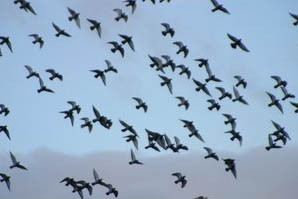
July 22, 2004 Stockholm, Sweden – Lloyd Jones reporting for Australia’s Herald Sun in Stockholm began a dispatch today:
“Homing pigeons vanish during race. Organizers of a race for homing pigeons were still scratching their heads in wonder today after about 1500 of the birds, famous for their ability to find their way home, went missing during the contest.”
Usually it takes the pigeons only two hours to return to their home lofts. But a member of the Malmoe Homing Pigeon Club, Lars-Aake Nilsson, said only about 500 of the 2000 pigeons flown in the contest have returned after the 150 kilometer flight between the cities of Ljungby and Malmoe in southern Sweden. “
The weather was perfect – no rain, no thunder and no strong winds,” he said.Mr. Nilsson and other homing pigeon raisers wonder if changes in the earth’s magnetic field could be the culprit. Homing pigeons use the sun and magnetic fields of the earth to navigate. So far, none of the missing homing pigeons have turned up anywhere in southern Sweden. “I have worked with pigeons since 1960 and have never experienced anything like this,” Mr. Nilsson said. “It’s a mystery.”
Back on October 5, 1998, the same kind of disappearance happened in two American homing pigeon races. In one, about 1,600 pigeons vanished out of 1,800 competing in a 200-mile race from northern Virginia to Allentown, Pennsylvania. The same day, 600 out of 700 birds were missing after a 150-mile race from western Pennsylvania to Philadelphia.
29,000 American White Pelicans Disappear
On May 28, 2004, the Bismarck, North Dakota office of the U. S. Fish and Wildlife Service began hearing that American White Pelicans were disappearing from the Chase Lake National Wildlife Refuge north of Medina, North Dakota. Two and a half weeks later, 29,000 pelicans wre gone without a trace. See 06/17/04 Earthfiles.
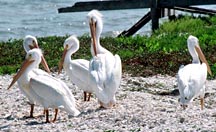
Dying Flamingoes and Brown Pelicans
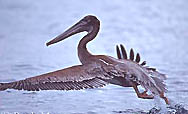
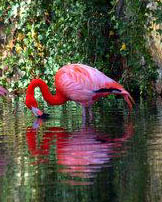
On July 15, 2004, the director general of Tanzania, Afria’s National Parks (Tanapa), Gerald Bigurube reported: “The death of more than 10,000 flamingoes in Lake Manyara is a real tragedy and we are still puzzled with the cause and nature of the mysterious disease that has struck these beautiful creatures.” The suspicion is that there is something wrong with the lake water and flamingo carcasses have been sent to the Leibniz Institute of Fresh Water Ecology and Inland Fisheries in Berlin, Germany, for laboratory testing.
Since July 13th, California media have reported “an unusually high number of California brown pelicans are washing up on local shores weak, dehydrated and near death.” Wildlife officials are puzzled about why the endangered pelican is starving to death during an abundant yeaar of anchovies which pelicans normally thrive upon. Judy St. Leger, a veterinarian at San Diego’s SeaWorld aquatic animal park told Reuters, “They are starving, but we do think there are plenty of anchovies. It is an unusual and very extraordinary event.”
North American Duck Population Declines 11 Percent
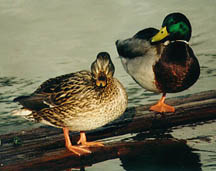
The U. S. Fish and Wildlife Service and Canadian Wildlife Service reported this month that the duck population in the United States and Canada has dropped 11 percent in one year, largely linked to drought that has dried up water in duck breeding grounds.
England’s Bird Population Declines 33% in 25 Years
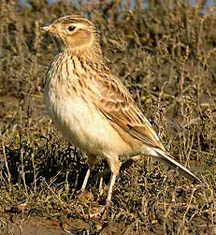
Surveys carried out by the European Bird Census Council, Birdlife International and the UK’s Royal Society for the Protection of Birds (RSPB) in 11 European Union Member States, five accession countries and Norway and Switzerland, reveal that the numbers of twenty-four of Europe’s most familiar bird species have fallen by one third in just a quarter of a century.
Across the continent and especially in northwest Europe, where the most intensive agricultural methods are practiced, birds such as skylarks, lapwings and yellowhammers are in decline, the report reveals. The declines pinpointed by the report are most alarming in intensive farming countries such as the UK, where, between 1970 and 1999, skylark numbers declined by 52 per cent, the yellowhammer by 53 per cent and the corn bunting by 88 per cent.
More Information:
Viewers Reports
“Dear Linda:
I think that there is a lot more going on with birds than anyone knows, only on a more subtle level. I live in central Texas and was very surprised a couple of days ago to see a small flock of robins in our neighborhood park. I walk everyday and have a good familiarity with most of the birds in this part of Texas, so I know them when I see them. Typically, robins spend there winters down this way, then leave in the early spring and head back north. I have never seen a robin in the summer before two days ago. I guess it could just be a fluke, and that some robins just decided to stay on for our wonderfully pleasant summer weather (not!).
As for the missing birds, they have to be somewhere, which is the real puzzle. Where did they end up?
Best wishes,
Darlene Grymkoski, Texas”
“To start off I am no expert but, I was wondering if anybody has tried to
link these bird mysteries with the recent solar flare activities from the
sun. I read on a nasa website that there has been some unusally large solar
flares in the past year.
On a side note, I have been living in my home for 30 years and this year,
for the first time, there seems to be very large numbers of small birds
(robins, backbirds,etc..) in my homes trees… at night they number in the
upper hundreds and this past weekend there were so many birds in my
neighbors tree that it actually fell down ( a weeping willow ) … I have
also noticed the drop in ducks too… every year we used to get ducks in the
back yard and this year we saw very few mallards
Thanks for the great website that seems very non-biased,
Michael Delisi, Illinois”
Websites:
http://www.nmnh.si.edu/BIRDNET/
© 1998 - 2025 by Linda Moulton Howe.
All Rights Reserved.

